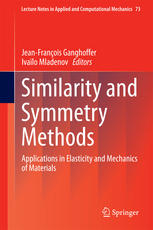

Most ebook files are in PDF format, so you can easily read them using various software such as Foxit Reader or directly on the Google Chrome browser.
Some ebook files are released by publishers in other formats such as .awz, .mobi, .epub, .fb2, etc. You may need to install specific software to read these formats on mobile/PC, such as Calibre.
Please read the tutorial at this link: https://ebookbell.com/faq
We offer FREE conversion to the popular formats you request; however, this may take some time. Therefore, right after payment, please email us, and we will try to provide the service as quickly as possible.
For some exceptional file formats or broken links (if any), please refrain from opening any disputes. Instead, email us first, and we will try to assist within a maximum of 6 hours.
EbookBell Team

4.4
12 reviewsThe principle aim of the book is to present a self-contained, modern account of similarity and symmetry methods, which are important mathematical tools for both physicists, engineers and applied mathematicians. The idea is to provide a balanced presentation of the mathematical techniques and applications of symmetry methods in mathematics, physics and engineering.
That is why it includes recent developments and many examples in finding systematically conservation laws, local and nonlocal symmetries for ordinary and partial differential equations.
The role of continuous symmetries in classical and quantum field theories is exposed at a technical level accessible even for non specialists. The importance of symmetries in continuum mechanics and mechanics of materials is highlighted through recent developments, such as the construction of constitutive models for various materials combining Lie symmetries with experimental data.
As a whole this book is a unique collection of contributions from experts in the field, including specialists in the mathematical treatment of symmetries, researchers using symmetries from a fundamental, applied or numerical viewpoint.
The book is a fascinating overview of symmetry methods aimed for graduate students in physics, mathematics and engineering, as well as researchers either willing to enter in the field or to capture recent developments and applications of symmetry methods in different scientific fields.